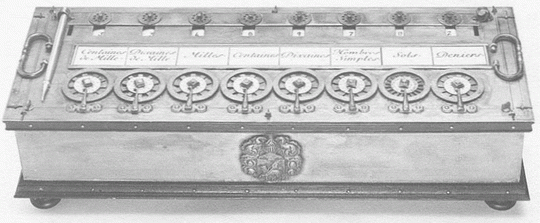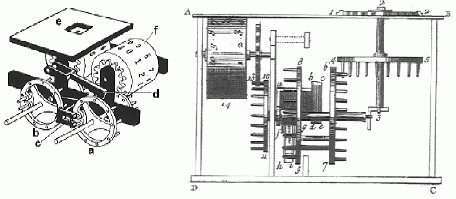
Pascal's Calculator or Pascaline is a calculating device which was created by Blaise Pascal at the age of 18 in 1642. The device was mainly used for additions of numbers and could also be used for subtractions (by addition with the use of nine complements), multiplication and division (by repeated addition and subtraction).
The calculator is 36 cm long, 13 cm wide and 8 cm high with a metal surface and it was compact enough to carry. The device was operated by turning the appropriate metal dials. Numbers were displayed in eight windows in the top of the device. The numbers are written on drums. Each drum has two rows of numbers. When performing a calculation, one row would be covered by a slat which then could be moved down on the inputted number to allow the user to input the second number to compute.
Each wheel of the top of Pascaline has one axle that has one horizontal crown type gear. The gear is transmitting the rotation of the wheel to a vertical crown type gear. That gear is attached to an horizontal axle that has two additional crown-type gears. One that is the main gear and the third gear that is a little smaller than the other two and it is linking the base axle to the the numbered drums. The three gears are in a row from the front to the back. . The mechanism also included a weighted ratchet between the main gears that pushes the next in the row gear whenever there is a carry from the previous gear. This mechanism is shown below:
Pascal attempted to mass produce this device, but wasn't very successful due to high cost in production (gears had to be hand crafted). A large number of these devices still exist in the present day.


No comments:
Post a Comment